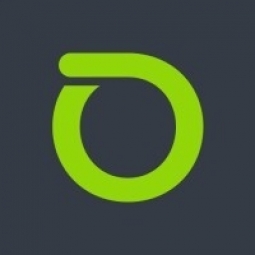Customer Company Size
Large Corporate
Region
- America
Country
- United States
Product
- NETSCOUT nGeniusONE Service Assurance platform
- NETSCOUT nGenius Packet Flow Switch (PFS)
- NETSCOUT InfiniStream appliance
Tech Stack
- IoT
- Unified Communications and Collaboration (UC&C)
- Virtualization
- Cloud
Implementation Scale
- Enterprise-wide Deployment
Impact Metrics
- Productivity Improvements
- Customer Satisfaction
- Cost Savings
Technology Category
- Infrastructure as a Service (IaaS) - Cloud Computing
Applicable Industries
- Healthcare & Hospitals
- Cities & Municipalities
Applicable Functions
- Maintenance
- Logistics & Transportation
Use Cases
- Process Control & Optimization
- Predictive Maintenance
- Real-Time Location System (RTLS)
Services
- System Integration
- Cloud Planning, Design & Implementation Services
About The Customer
The customer is a California government agency that is the second largest integrated municipal health care system in the United States. The agency operates over 19 health centers and clinics, four hospitals, and has an annual operating budget of $4 billion. The agency employs over 19,000 people that provide world-class health care to over 670,000 patients annually. The agency's IT infrastructure is a critical component of its operations, supporting the delivery of health care services to its patients. The agency's IT services and applications are essential for the caregivers to provide patient care. The agency's IT professionals need to make real-time decisions in a highly agile and evolving environment, similar to the health care staff.
The Challenge
The California government agency, being the second largest integrated municipal health care system in the United States, faced several challenges. The agency needed to leverage the Internet of Things (IoT), Unified Communications and Collaboration (UC&C), virtualization, cloud and continuous software delivery. Moreover, endemic digital services vital to health care providers include electronic medical records (EMR), electronic health records (EHR) and enterprise resource planning (ERP) systems as well. And that’s not all. Oracle® databases, Microsoft Exchange® email services, bring-your-own-device (BYOD) initiatives and policies are essential for health care provider teams and the industry at large. Thus, the requirement to have comprehensive end-to-end visibility of the entire IT infrastructure is mandated by the seamless flow of crucial, mission- and patient-critical data. In fact, EMR requests alone are literally made millions of times a day. As complexity grows with digital systems and automation, so does the opportunity for things going wrong anywhere along the service-delivery path and this can severely diminish patient care. That means the IT organization must get ahead of service performance problems before they become health care problems. Some of the specific challenges this Southern California agency grappled with are: Understanding capacity utilization, Automatic, end-to-end awareness of all service dependencies and interrelationships within the IT chain, Maintaining an evolving IT infrastructure, Automating the process of software delivery and infrastructure changes, Isolating and resolving service-delivery infrastructure problems, Clinical application availability 24/7/365, Contextual analysis for applications and digital services.
The Solution
The agency chose the NETSCOUT nGeniusONE Service Assurance platform including the InfiniStream appliance and nGenius PFS for its unparalleled ability to monitor, organize and visualize traffic data necessary to manage and measure IT infrastructure and services. Powered by its powerful Adaptive Service Intelligence™ (ASI) engine, the NETSCOUT nGeniusONE platform addresses service assurance challenges with smarter data and superior analytics. By inspecting traffic data continuously and analyzing large volumes of data at high velocity for complex, distributed IT services, NETSCOUT helps the Southern California health care agency solve performance issues before they impact health care services. Moreover, the agency leveraged a combination of PFS Mode on each InfiniStream and VLAN tagging on the nGenius PFS switches to isolate traffic data and create additional physical interfaces needed for comprehensive visibility and reporting. The solution entailed several important adjustments including the appending of VLAN tags at the nGenius PFS switch to abstract the physical topology and to thus eliminate congestion. At the InfiniStream, the PFS Mode allowed the association of the appended VLAN tags with a unique physical interface. Lastly, the agency also has the ability to run Link Usage reports on the newly created VLAN physical PFS interfaces.
Operational Impact
Quantitative Benefit

Case Study missing?
Start adding your own!
Register with your work email and create a new case study profile for your business.
Related Case Studies.

Case Study
Turning A Stadium Into A Smart Building
Honeywell created what it called the “intelligent system” for the National Stadium in Beijing, China, turning the venue for the opening and closing events at the 2008 Summer Olympics into a “smart building.” Designed by highly controversial artist Ai Weiwei, the “Bird’s Nest” remains one of the most impressive feats of stadium architecture in the world. The 250,000 square meter structure housed more than 100,000 athletes and spectators at a time. To accommodate such capacity, China turned to Honeywell’s EBI Integrated Building Management System to create an integrated “intelligent system” for improved building security, safety and energy efficiency.
.png)
Case Study
Smart Street Light Network (Copenhagen)
Key stakeholders are taking a comprehensive approach to rethinking smart city innovation. City leaders have collaborated through partnerships involving government, research institutions and solution providers. The Copenhagen Solutions Lab is one of the leading organizations at the forefront of this movement. By bringing together manufacturers with municipal buyers, the Copenhagen Solutions Lab has catalyzed the development and deployment of next-generation smart city innovations. Copenhagen is leveraging this unique approach to accelerate the implementation of smart city solutions. One of the primary focus areas is LED street lighting.

Case Study
Hospital Inventory Management
The hospital supply chain team is responsible for ensuring that the right medical supplies are readily available to clinicians when and where needed, and to do so in the most efficient manner possible. However, many of the systems and processes in use at the cancer center for supply chain management were not best suited to support these goals. Barcoding technology, a commonly used method for inventory management of medical supplies, is labor intensive, time consuming, does not provide real-time visibility into inventory levels and can be prone to error. Consequently, the lack of accurate and real-time visibility into inventory levels across multiple supply rooms in multiple hospital facilities creates additional inefficiency in the system causing over-ordering, hoarding, and wasted supplies. Other sources of waste and cost were also identified as candidates for improvement. Existing systems and processes did not provide adequate security for high-cost inventory within the hospital, which was another driver of cost. A lack of visibility into expiration dates for supplies resulted in supplies being wasted due to past expiry dates. Storage of supplies was also a key consideration given the location of the cancer center’s facilities in a dense urban setting, where space is always at a premium. In order to address the challenges outlined above, the hospital sought a solution that would provide real-time inventory information with high levels of accuracy, reduce the level of manual effort required and enable data driven decision making to ensure that the right supplies were readily available to clinicians in the right location at the right time.

Case Study
Buoy Status Monitoring with LoRa
The Netherlands are well-known for their inland waterways, canals, sluices and of course port activities. The Dutch Ministry of Infrastructure indicates that there are thousands of buoys and fixed items in and near water environments that would profit from IoT monitoring. One of the problems with buoys for example, is that they get hit by ships and the anchor cable breaks. Without connectivity, it takes quite some time to find out that something has happened with that buoy. Not to mention the costs of renting a boat to go to the buoy to fix it. Another important issue, is that there is no real-time monitoring of the buoys at this moment. Only by physically visiting the object on the water, one gains insight in its status.

Case Study
Barcelona Case Study
Barcelona’s heavy traffic and its associated high levels of pollution were the primary factors that motivated some companies and universities to work on strategies for improving traffic in the city centre. Bitcarrier is one of the technologies involved in the In4Mo Project, whose main objective is to develop the applications that form the core of smart mobility, one of the fundamental pillars of the smart city concept.








